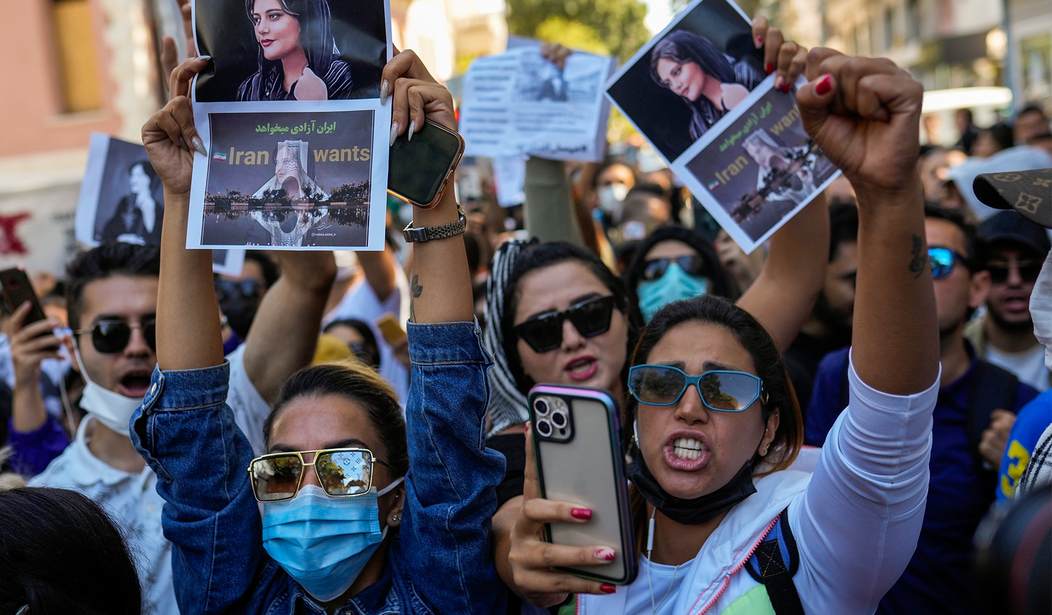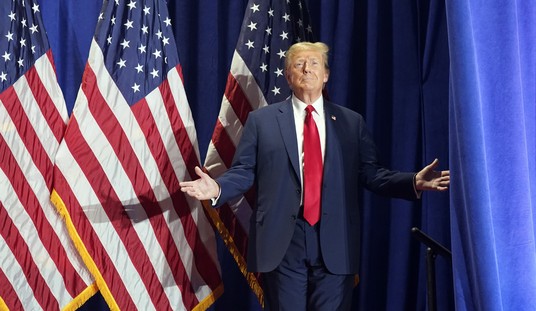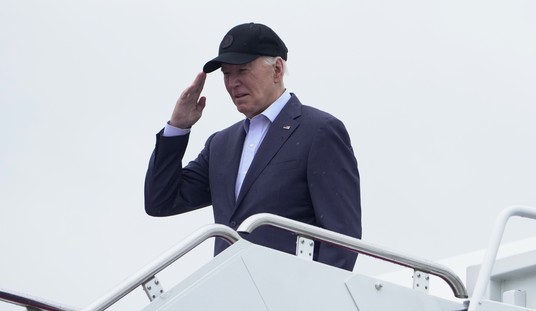The story of Jina Mahsa Amini revealed -- once again -- the brutal, ruthless nature of the Iranian regime.
Amini, a 22-year-old woman, traveled last September from her hometown in western Iran to Tehran, making what the United Nations Human Rights Council described as a "family visit."
During this visit, she encountered Iran's "morality police."
"Iran's Morality Police," explains the U.S. Treasury Department, "is the component of Iran's Law Enforcement Forces (LEF) tasked with enforcing the country's laws against immodesty and societal vices."
Why did the "morality police" target this 22-year-old woman?
They objected to the nature of the scarf she wore over her head.
"The law provides that a woman who appears in public without appropriate attire, such as a cloth scarf over the head (hijab) and a long jacket (manteau), or a large full-length cloth covering (chador), may be sentenced to flogging and fines," the State Department explained in its latest report on human rights in Iran.
Iran's regime decided last summer to intensify its enforcement of this law.
"An increased emphasis on the enforcement of the law on the wearing of the hijab during the reporting period was evidenced when, in June 2022, the morality police expanded street patrols, subjecting women perceived to be wearing 'loose hijabs' to verbal and physical harassment, arresting them and shutting down several businesses," the U.N. Human Rights Council said in a report on Iran published in February.
"President Raisi requested all government entities to strictly implement a 'chastity and hijab' law, calling the lack of compliance with rules on the wearing of the hijab 'an organized promotion of moral corruption in Islamic society,'" said the U.N. report. "In August 2022, he signed a decree ordering further repressive measures. A month later, the authorities announced a plan to use surveillance technology to detect women wearing 'improper hijabs' on public transport and in shopping centres with a view to imposing financial penalties on them."
Recommended
They did more than that to Amini.
"On September 13, police detained Amini for her alleged 'improper hijab' while she was visiting Tehran from her home in the Kurdistan region," said the State Department's report. "According to Human Rights Activists News Agency (HRANA), her family was initially told she would be released from the Vorzara Detention Center in an hour, but instead she was transported to a hospital on September 14."
Why did this 22-year-old woman need to go to a hospital?
"Eyewitness accounts and other evidence indicate that she was violently beaten while being forcibly transferred to Vozara detention centre in Tehran," says the U.N. report. "Reports, including images of Jina Mahsa Amini in the intensive care unit, suggest that she was assaulted on the head. Within hours of her arrest, she fell into a coma and was transferred to Kasra Hospital. She was officially declared dead on 16 September 2022."
Did the Iranian regime show any interest in holding accountable the authorities responsible for killing her? No.
"Not only were the multiple requests of Jina Mahsa Amini's family for the establishment of a committee of independent doctors to investigate her death rejected, but her family was denied access to her autopsy report and was subjected to threats and pressure by the authorities," says the U.N. report. "The recordings of Jina Mahsa Amini's arrest were not released. Various sources, including a former Islamic Revolutionary Guard Corps commander, as well as other independent sources, have pointed to reports that Jina Mahsa Amini was severely beaten up by the morality police with her death reportedly occurring because of torture and ill-treatment at the hands of the police."
The U.N. report also states that Iranian authorities "made unsubstantiated claims that Jina Mahsa Amini died because of a heart problem and that her death was linked to pre-existing medical conditions, claims which were all rejected by her family."
Many Iranians clearly did not believe their government.
"Multiple nationwide protests began shortly after the September 16 death of Mahsa (Jina) Amini in the custody of morality police after she allegedly violated mandatory veiling laws, and security forces used lethal force against protesters," says the State Department report. "Women and youth led the protests, chanting 'Women, Life, Freedom' and 'Death to the Dictator.' By the end of the year, security forces killed more than 500 persons, including at least 69 children, and arrested more than 19,000 protesters, including children, according to the nongovernmental organization Human Rights Activists News Agency.
"Some of those arrested faced the death penalty, including children," said the State Department.
At the end of February, as reported by the Associated Press, two Iranian warships showed up in Rio de Janeiro. At a March 1 press briefing, a reporter asked State Department spokesperson Ned Price about this incident.
"Despite U.S. pressure, Brazilian government let two Iranian warships to dock in Rio. Do you have any comments on that?" the reporter asked.
"This is something that we are discussing with our Brazilian partners," said Price. "We want to make sure that the IRGC (Islamic Revolutionary Guard Corps) -- that Iran more broadly -- is not able to acquire a foothold, is not able to take advantage of others in this hemisphere."
This month, Ayatollah Ali Khamenei, Iran's "supreme leader," assembled the crews of these two warships to congratulate them for sailing around the world -- and challenging American power.
"First of all, this great movement shows that there is great determination, willpower, and self-confidence in our military forces," the ayatollah told the sailors, according to a transcript posted on his English-language website.
"Your presence in remote areas, at the far ends of the Pacific and Atlantic oceans, contributed to the country's security," said the ayatollah.
"Monopolization of areas belonging to all humanity is one of the characteristics of the United States and the superpowers. You showed the falseness of this," the ayatollah said.
Can the United States trust the regime in which Jina Mahsa Amini died "in the custody of the morality police" -- as the State Department puts it -- to send warships anywhere near our own shores? No.

























Join the conversation as a VIP Member